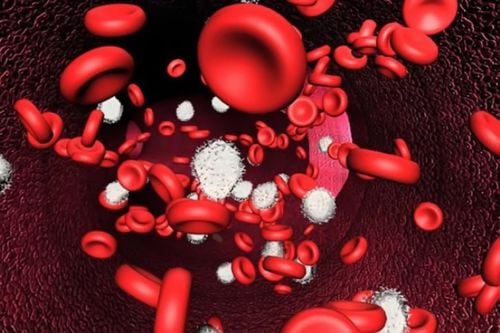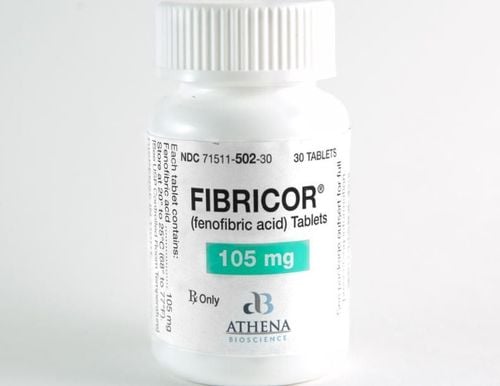This is an automatically translated article.
Clorazer is an anticoagulant with antiplatelet effect, reducing the risk of thrombus formation in the sclerotic lumen and related complications.1. What effect does Clorazer have?
Clorazer has the main ingredient is Clopidogrel 75mg (as Clopidogrel bisulfate), is made in the form of film-coated tablets.Indications of Clorazer:
Reduction or prevention of events due to blood clot formation (thrombosis) in the hardening of the arteries (atherosclerosis), ischemia, Primary prevention of conditions disorders caused by thromboembolism such as: myocardial infarction, stroke, cerebrovascular accident, peripheral artery disease. Control and secondary prevention in atherosclerotic patients with recent myocardial infarction, stroke, or established peripheral artery disease. Used in combination with aspirin for the treatment of patients with unstable angina or non-Q wave myocardial infarction.
2. Instructions on how to use Clorazer
Clorazer is taken orally and can be taken with or without meals.Suggested dosage:
Adults: Take 1 tablet (75mg/time/day). Patients with a history of atherosclerosis: Take 1 tablet 75mg/day. Acute coronary syndromes (non-Q-wave myocardial infarction, unstable angina): Initial dose of 4 tablets (total 300mg/first day). Then take a dose of 75mg/day (in combination with aspirin 75-325mg/day) in the following days. To prevent thromboembolic disorders (myocardial infarction, peripheral artery disease, stroke): Take 1 tablet 75mg/day. Note:
No dose adjustment is required in the elderly or in patients with renal impairment. There are no data on safety and efficacy in patients under 18 years of age.
3. Clorazer side effects
Clorazer is generally well tolerated. However, in the course of drug treatment, there may still be some side effects such as:Common side effects: Digestive disorders (abdominal pain, diarrhea, indigestion and nausea), skin allergies (rash). red, itchy). Uncommon side effects: Chest tightness, nosebleeds. Rare side effects: Gastrointestinal bleeding, gastric ulcer, neutropenia, severe agranulocytosis, thrombocytopenia syndrome, thrombocytopenic purpura, intracranial hemorrhage, haemorrhage ophthalmic, aplastic anemia, nephritis, acute arthritis. If you experience any of the above undesirable side effects or any unusual signs during treatment with this medicine, immediately notify your doctor.
4. Note when using Clorazer
Clorazer is contraindicated in the following cases:Hypersensitivity to any component of the drug. Having pathological bleeding conditions such as: Gastroduodenal bleeding, intracranial hemorrhage, retinal hemorrhage. Patients with severe liver failure. Use caution when using Clorazer for the following subjects:
Patients with bleeding due to trauma, surgery or other diseases. The drug should be discontinued 7 days before surgery. Patient prepares for surgery. Patients with hemorrhagic lesions (inflammation, ulcers,...). Patients with renal impairment, hepatic impairment, with changes in metabolism (poor metabolism due to CYP2C19). Pregnant. Women are breastfeeding.
5. Clorazer drug interactions
Caution should be exercised when using Clorazer in combination with Aspirin, non-steroidal anti-inflammatory drugs, thrombolytics, warfarin, and heparin because it may increase the risk of bleeding. The active ingredient Clopidogrel in Clorazer inhibits cytochrome P450 CYP2C19, so it will affect drugs metabolized by this enzyme such as: Phenytoin, Corticoids, Propanolol,... In addition, some recent studies show that the drugs inhibit proton pump (PPI) has the potential to reduce clopidogrel's antiplatelet effect. However, there is still no clear evidence of this interaction, so the two drugs should only be combined when absolutely necessary.Please dial HOTLINE for more information or register for an appointment HERE. Download MyVinmec app to make appointments faster and to manage your bookings easily.













